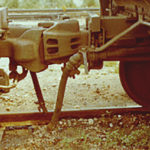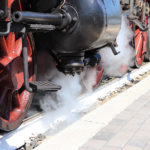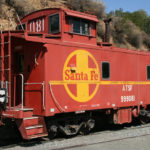The story of Westinghouse Electric and affiliates does not end with its bankruptcy, but it does change dramatically. It is a twisting tale of getting into new markets, abandoning old ones, having some successes, and having some abysmal failures, which completely transformed what remained.
A few of the many highlights and developments include:
- setting up KDKA in 1920, the first commercial AM radio station in 1920, broadcasting from the roof of the Westinghouse plant in East Pittsburgh;
- becoming a major military contractor. The Westinghouse SCR-270 aircraft warning radar system detected the Japanese attack on Pearl Harbor (but the signals were apparently misinterpreted). From the 1960s to the 1980s, Westinghouse had significant contracts related to the F-16 and F-4E fighters, the B-52 and B-1B strategic bombers, the AWACS radar plane, the Mk 48 torpedo, the Trident nuclear submarine, and the MX missile. In 1985, they were the nation’s 13th-largest defense contractor, and military projects were about one-fifth of their sales in 1988;
- entering the elevator business in 1927 through an acquisition, then selling it a few years later;
- building small and large kitchen appliances, including toasters, refrigerators, and cooking ranges, with a famous advertising slogan, was “you can be sure if it’s Westinghouse”;
- buying and selling companies in markets, including many that were not technology-related. Among these ventures was office furniture, soft-drink bottling, car rentals, motels, transport refrigeration, land development, mail-order record clubs, cable-TV operator Teleprompter, robot manufacturer Unimation, and low-cost prefabricated housing — and that’s only a partial listing;
- developing the axial-flow jet engine in the 1950s, which was a major design advance for jet engines;
- being a major participant in a bid-rigging scheme in the late 1950s, in collusion with other companies selling switchgear to electric utilities; forty-five executives from 29 companies were indicted, and all pleaded guilty;
- designing and building the world’s first commercial nuclear power plant at Shippingport, PA, in 1957 (Reference 3). Nuclear power was supposed to a major success for Westinghouse, but a combination of events (Three Mile Island) and cost overruns issues turned it into a major loss. They sold the business to Toshiba for $5.4 billion in 2006 (and now, Toshiba itself is near bankruptcy due to multibillion-dollar overruns on several nuclear projects, and may sell its memory-IC division to raise cash);
- setting up a financing operation, Westinghouse Credit Corporation, in 1954, which was to become a major source of multibillion-dollar losses in about two decades.
By the end of 1992, the company had sold off almost $8 billion in assets in an attempt to survive in some form, with losses of nearly $6 billion (most of which were attributable to $13 billion in bad loans). Between 1985 and 1995, the workforce had shrunk 50%, down to 85,000.
With the proceeds of the many sales, Westinghouse acquired a set of media properties for $16 billion that included CBS (itself founded in 1927), Infinity Radio, American Radio Systems, and The Nashville Network in 1995. The company’s name was changed from Westinghouse Electric to CBS. Recently, part of that media group has seen its own major decline as well: CBS announced in February 2017 that it was spinning off its radio business and combining it with broadcaster Entercom. This combined company will keep the Entercom name.
Perhaps it is irony or just a case of circling back to its roots, but the part of what was Westinghouse that is doing fairly well is Wabtec, successor to Westinghouse Airbrake. It was independent of Westinghouse Electric for more than a century, before it merged with another railway product company in 1998, and is reasonably profitable with sales of than $1 billion in 2019 (the railroad boom of the last decade certainly helped). Finally, in February 2019, GE completed the spinoff and merger of its transportation business, which includes the construction of diesel locomotives, with Wabtec.

In many ways, the trajectory of Westinghouse is similar to that of its long-time rival, Radio Corporation of America (RCA) (see EE World Reference). Today, Westinghouse not only bears nearly no resemblance to its founder or trace of his company, while its name is hardly known by the public or engineering community. Its logo, once among the most recognizable, is now mostly a historical artifact (Figure 1).
There’s a lesson here for anyone who assumes that today’s best-known technology companies such as Google, Facebook, Apple, Microsoft, Intel (you can add your own names to the list) will not only be with us “forever,” but will also retain that dominance and recognizability. Of the “Big Three” companies of the electrical-industrial age – Westinghouse, RCA, and Edison Electric – only the last one, once known as General Electric (now GE), survives in a form even slightly similar to its original. Today’s GE is a shell of its former glory (GE sold its home appliances a few years ago and just sold off its iconic light bulb business, hard to believe as that may be).
EE World References
RCA
RCA & Color TV: A dominant company and standard, both now gone – Part 1
RCA & Color TV: A dominant company and standard, both now gone – Part 2
Locomotives
Electrified Locomotives, Tunnels, and the Pennsylvania Railroad: Astonishing engineering but a partially sad ending, Part 1: The challenge
Electrified Locomotives, Tunnels, and the Pennsylvania Railroad, Part 2: The tunnels
Electrified Locomotives, Tunnels, and the Pennsylvania Railroad, Part 3: The station
Catenary power
Electric locomotives and catenary power systems – Part 1: basic functions
Electric locomotives and catenary power systems – Part 2: power needs
Electric locomotives and catenary power systems – Part 3: power delivery
Electric locomotives and catenary power systems – Part 4: maintenance and corona
External References
- S. Patent 144006, “Improvement in steam and air brakes”
- The Traffic Accident Reconstruction Origin (TARO), “An Introduction to Train Brakes”
- Funding Universe, “Westinghouse Electric Corporation History”
- The Economist, “Westinghouse RIP”
- Engineering and Technology History Wiki, “Westinghouse Electric Corporation”
- Garbedian, H. Gordon, “George Westinghouse: Fabulous Inventor,” Dodd, Mead, 1943.
- The Railway Technical Website, “Electro-Pneumatic Brakes”
- net, “Braking Systems”
- Trains, “Electronically controlled pneumatic brakes study ‘inconclusive’ ”
- Trains, “The war over electric brakes”
- Statistica, “North American freight rail cars in service from 2009 to 2019, by car type”






